One day you may find yourself falling in love with plants and gardens and in the process discovering an entirely new language. Many plant nursery websites have a category called perennials, dedicated to plants that live for more than two years. What you might not realise is that this category never includes trees and shrubs and is in fact mostly dedicated to herbaceous perennials.
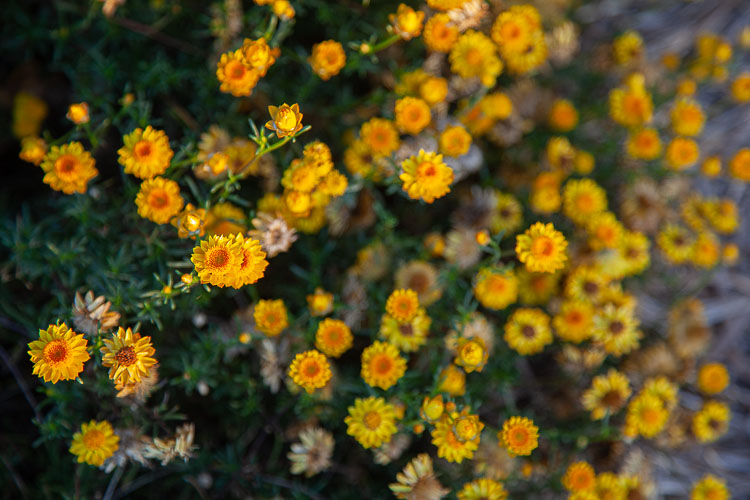
Herbaceous perennials are distinctly different to trees and shrubs. While they too, live for longer than two years, herbaceous perennials are mostly low growing plants such as grasses, flowers and herbs and hence offer an entirely different garden experience. Like trees and shrubs, they add valuable organic matter to soil and provide undisturbed habitat for soil microfauna. They also produce stunning flower shows, seed heads, or fragrant medicinal leaves.

Every winter the herbaceous perennials at ORTO farm receive some tender loving care in the form of a hard prune, a little compost or both. Knowing a little more about them helps us in the garden.
In this post I will explain:
Horticultural language – why words matter
What is a perennial plant
What are herbaceous perennials
How terminology helps us garden
A little more about herbaceous perennials with respect to plants that aren’t herbaceous perennials
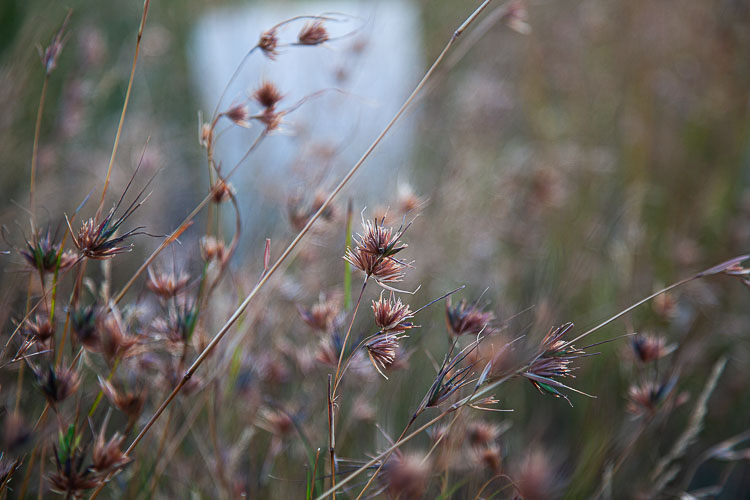
Why is it a good idea to understand the difference between herbaceous, shrub and subshrub?
Why great garden soil is always important and the need for compost
Why mature compost has excellent structure

When to plant herbaceous perennials

How to plant herbaceous perennials
Herbaceous perennials for bees, habitat, soil biota, cut flowers, architectural form and the dinner table!
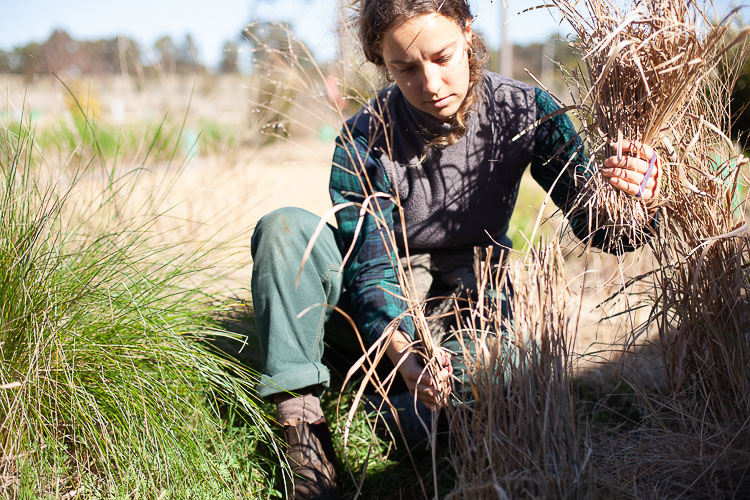
The use of herbaceous perennials in prairie gardens, grasslands and steppes
Compost for herbaceous perennials
Pruning herbaceous perennials
Before we begin, a little note about horticultural language.
Horticultural Language – Why Words Matter
When I first began creating gardens I had no idea how important horticultural language could be, words such as herbaceous perennial meant nothing to me. Over time I came to learn that even one word could reveal a great deal about a plants life cycle and care needs. In all relationships, plant, animal or human…words matter.
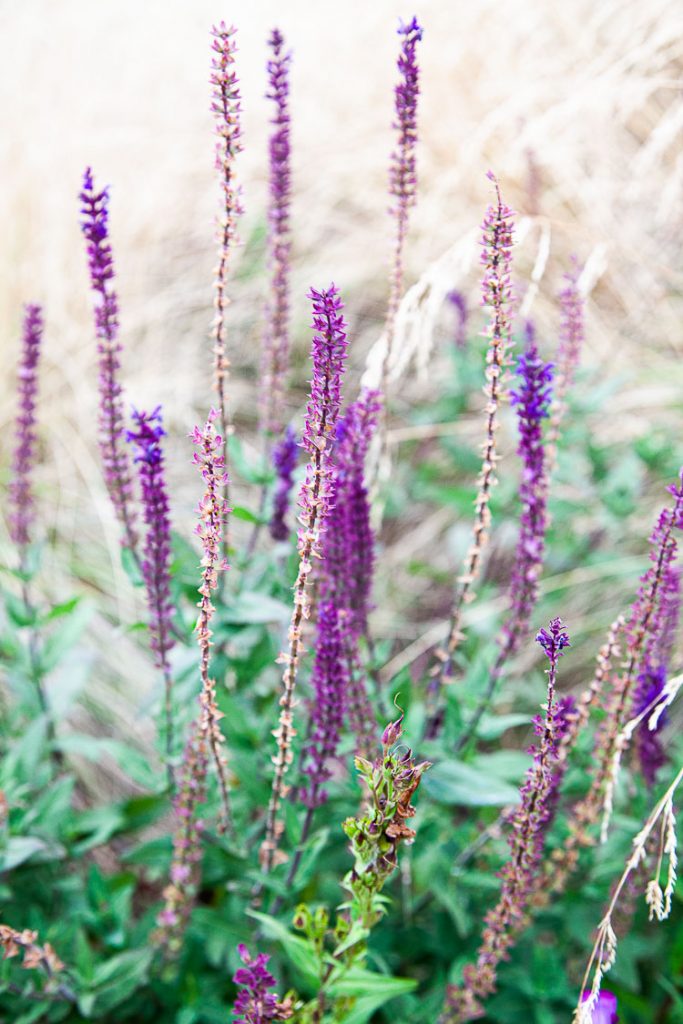
What is a perennial plant?
A perennial plant is one that grows for more than two years, unlike an annual plant which grows for one year (think tomatoes) then dies and a biennial, two years, (think raspberries) then dies (the two-year cane dies, but new canes constantly sprout from the soil to continue the two-year cycle). Trees and shrubs are perennials but this post is focused on herbaceous perennials.
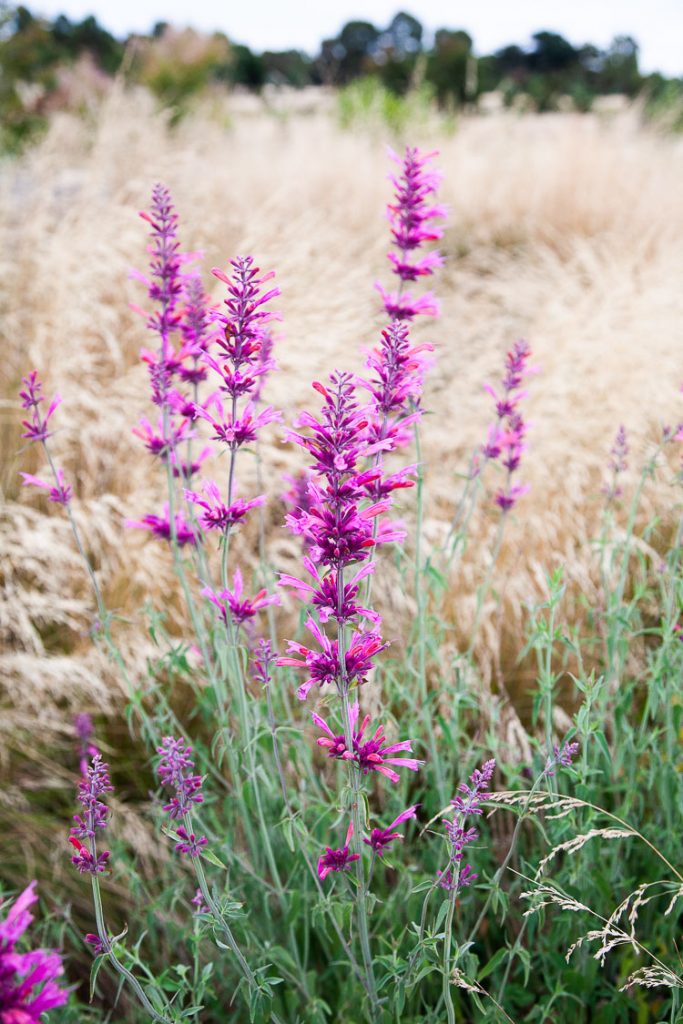
What are Herbaceous perennials?
Herbaceous is the word used to describe plants that don’t get woody. Trees and shrubs get woody, the stems on herbaceous plants however remain soft. A distinctive feature of herbaceous perennial plants is that they “die back” every winter and disappear from view, leading you to think the plant has in fact died, but it has not. The roots are alive underground and await for springs return.
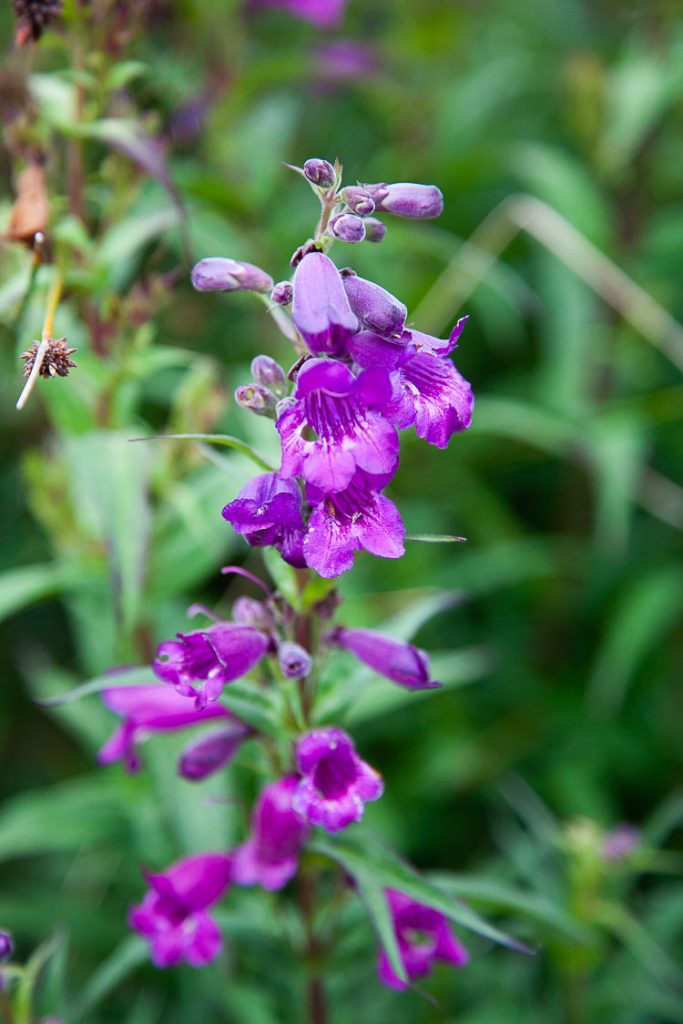
Grasses are herbaceous perennials too: Themeda triandra, Ficinia nodosa, Lomandra longifolia, Miscanthus sinensis. They die back in winter and produce new growth in spring.
Note the prefix ‘herb’ in the word herbaceous to denote that plants in this category are considered herbs regardless of whether they are herbs in the culinary sense of the word. Some herbaceous plants are culinary herbs and others are not. For example, fennel and artichoke are herbaceous plants and culinary herbs. Sedum ‘Autumn Joy’ (Hylotelephium spectabile ‘Autumn Joy’) is a herbaceous plant but not a culinary herb.
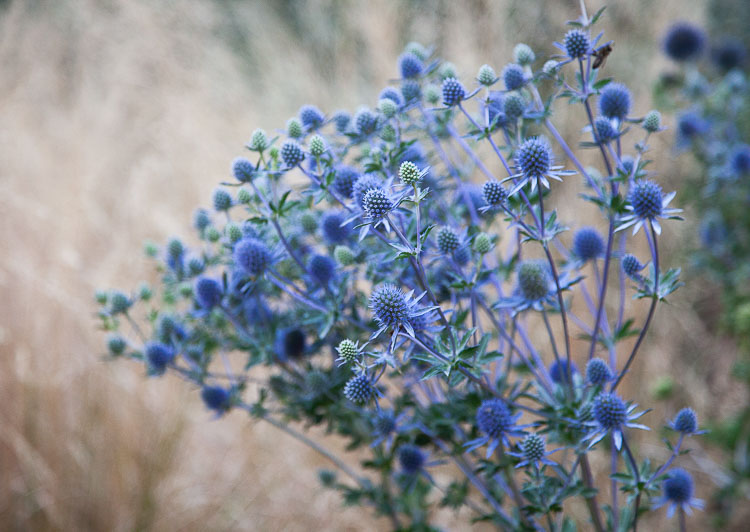
In this post, I am focused on herbaceous perennials but herbaceous plants can also be biennials: Foxgloves in the family Digitalis and parsley for example. And note that all annuals are herbaceous because they don’t form woody stems: think basil, corn, lettuce, peas and beans as examples.
How terminology helps us garden

Perennials, herbaceous, annuals and biennials. At first, these terms can seem unnecessary, complicated or only suited to being used by those that work in the horticultural industry. We may feel clumsy and self-conscious using them at first, but after some practice, we become empowered, because these words, tell us something about the life cycle of the plant bought/the cutting bartered.
A perennial tells you that it will live for many years.
An annual will live for one year and then die, and hence will need to be planted again, unless it self-seeds.
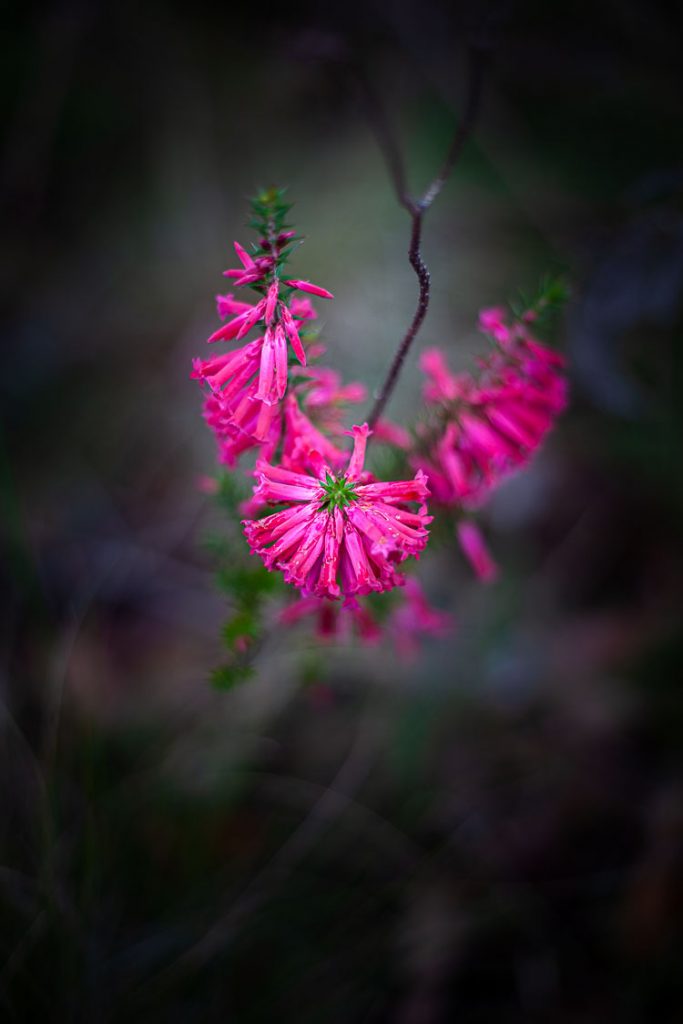
A biennial will live for a maximum of two years and then die and will therefore need to be planted again, unless it suckers (e.g. raspberries) or self-seeds (parsley).
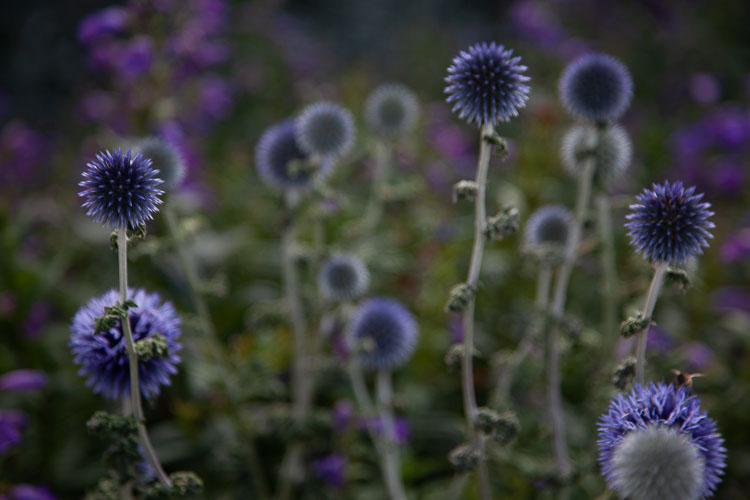
The word herbaceous tells us something important too. It lets us know that the plant is low growing*, retains soft green stems (not woody) and very importantly it alerts us to its ephemeral nature: it dies back in winter, suggesting permanent death, when in fact the plant is very much alive dormant underground.
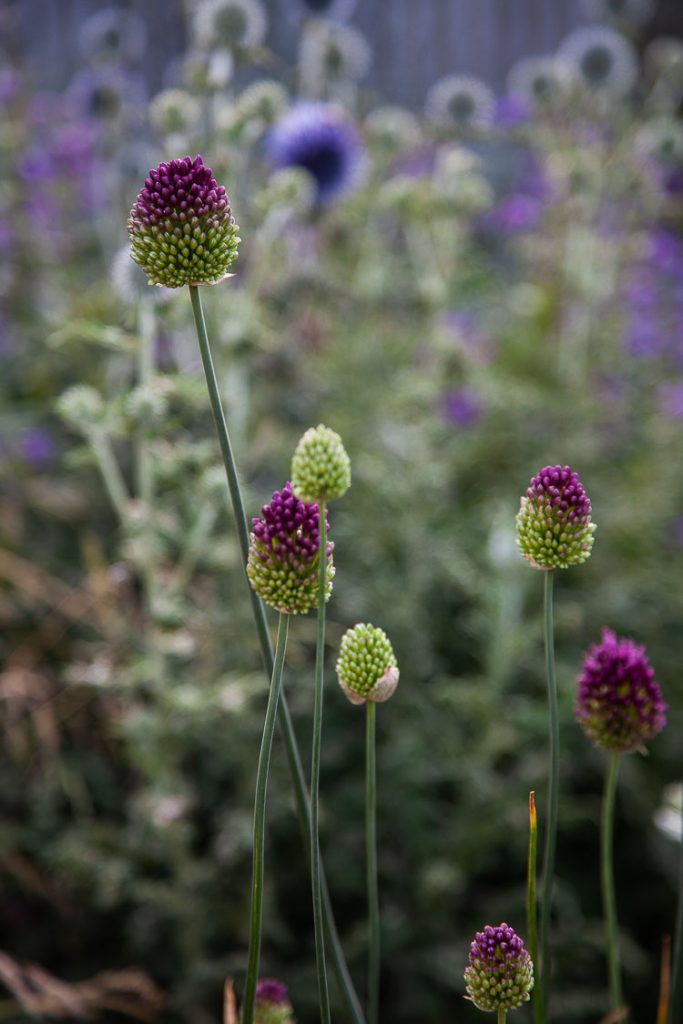
This information directly informs where we place herbaceous perennials in our garden, how to care for them and what to expect from them.
*(with the exception of banana plants, the tallest ‘herb’),
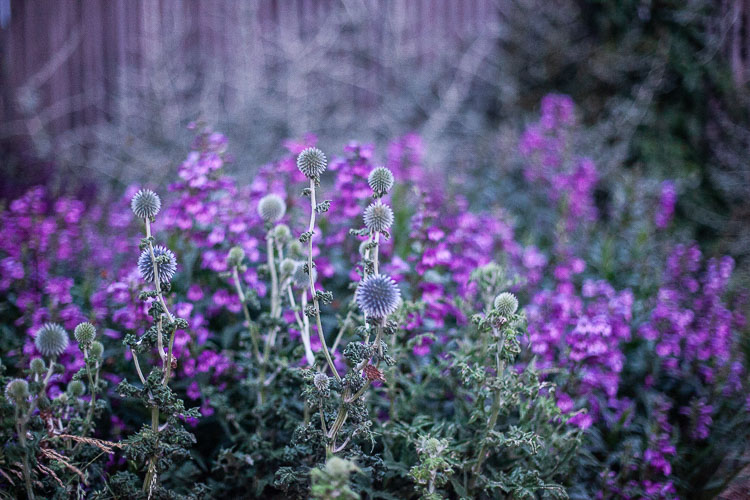
A little more about herbaceous perennials with respect to plants that aren’t herbaceous perennials
Many salvias (sage) plants, have woody stems and are therefore not called herbaceous perennials even though at first they appear to be. They are called either shrubs or subshrubs. Shrubs if they are woody all along the stem and subshrubs if their stems are a combination of woody parts and softer stem areas.
Raspberry plants (biennials) are not herbaceous because their canes turn woody during growth. Thyme and rosemary are perennials but not herbaceous because they too produce woody stems.

There are however just as many salvias that are herbaceous perennials such as Salvia nemorosa ‘Caradonna’, Salvia engelmannii, Salvia disjuncta, Salvia farinacea, Salvia glabrescens, Salvia elegans, and Salvia glutinosa.

Why is it a good idea to understand the difference between: herbaceous, shrub and subshrub?
These terms help us to build realistic expectations of the plants we place in our gardens and to develop an understanding of how to prune and care for them. Because if you are new to gardening and or new to a particular plant, by asking your nursery person ‘is this a shrub, subshrub or herbaceous plant’, you will be able to foresee, a little, of that plants life cycle, behaviour, form and care needs.

For example, as previously mentioned, a shrub will have entirely woody stems, such as Rosemary, Thyme or say a bigger shrub such as Grevillea. You can choose to cut it back a little after summer but if you cut it back to the ground you will kill each of these plants. A subshrub such as salvia, (but not all salvias) or lavender, will have lush green foliage at the top where the flowers are produced and woody stems lower down. With these plants, at the end of summer, you will want to prune back to the woody stem but not lower, otherwise, once again, you will kill the plant. In the case of a herbaceous perennial, however, in most cases, the entire plant all the way from top to bottom will die, only the roots will live. Hence you can cut it back to the ground. However in most cases best to leave it until new lush green shoots begin to form because you can lose track of where you planted it, but more importantly because every plant, alive or dead, provides habitat for birds and insects, and in light of plummeting populations of both, we must change the way we garden.
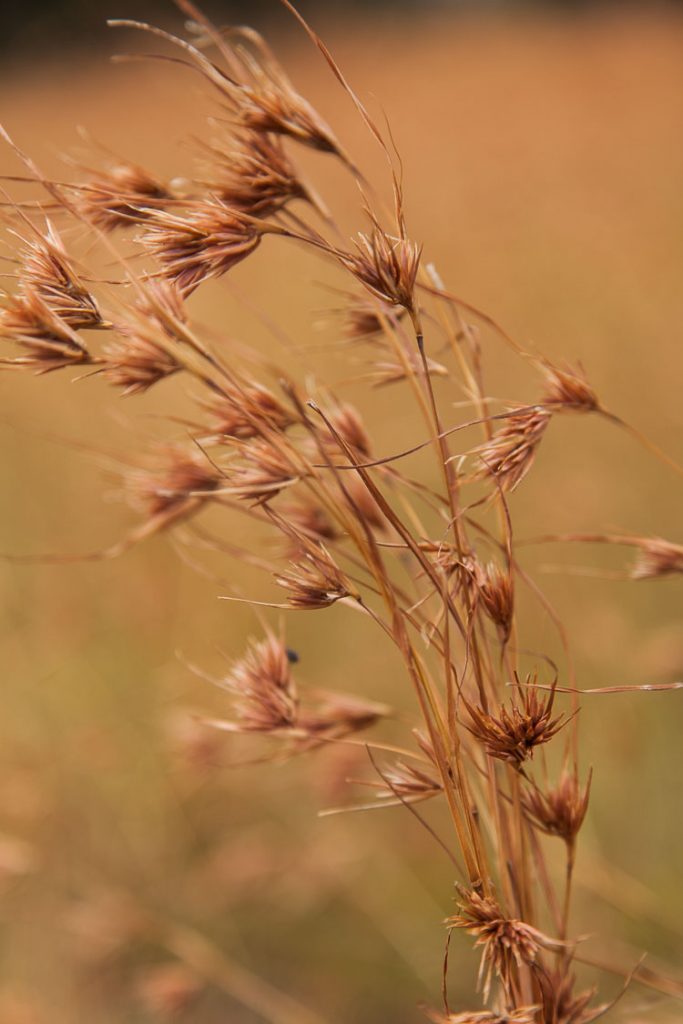
Why great garden soil is always important – The need for Compost
Regardless of what you are growing (with some exceptions), all plants are given the best chance to grow if provided with great garden soil. Great soil is one that has excellent structure: has literally been ‘built’ well. The builders are microorganisms and invertebrates. Fungi, bacteria, algae, earthworms, soil-dwelling insects, millipedes, centipedes, slaters. In order to get these builders to your site, you need to provide endless feasts for them. Their favourite food is organic matter: compost.

Compost that is fresh (raw) rather than thoroughly mature is best for improving soil structure. In other words, raw organic matter, onion skins, citrus peel, banana skins, vegetable scraps, egg cartons (with any plastic coatings removed), meat scraps and bones (separate bones from other organics and bury them at least 30cm deep so that they don’t get in the way when you are planting), eggshells, etc. bury these underground where your perennials will be planted. Do this ideally at least 6 months before planting in warm climates and 12 months in cooler climates). Every time your kitchen compost bucket gets full, have a spade or fork ready to go, to bury the compost in the area where you will plant. Make sure there are no irrigation, plumbing, sewage, or electrical conduits underneath. Visit the Dial Before You Dig website if you are in Australia.

Raw compost/kitchen scraps dug into soil prior to planting can be used for any garden type, but needs to be done months before planting to give microbial colonies the chance to digest the organic matter added and improve soil structure. Soil structure is improved because microbial colonies produce sticky secretions that bind soil particles into aggregates. Aggregates create ‘rooms’ in soil where oxygen, water, roots and microbes can live. Hence creating the perfect conditions for plant growth.

Raw organic waste dug into soil, will improve soil first and later, when it matures (decomposes) feed plants. Raw organic waste is readily available and free (a great opportunity to meet the neighbours to collect theirs). It does not need to be managed and turned and layered with straw (carbon), it just needs to be buried in soil, although adding a little straw and manure to it before burial will improve the quality and fertility of the soil it is buried in.

Mature compost primarily feeds plants (improves soil structure a little if a little is dug into soil, improves soil structure a lot if large quantities are added and dug in). You need a lot more mature compost than you need raw compost to produce great soil structure. They are both great. It is a question of time, quantity and cost.

Why mature compost has excellent structure.
If you are in a hurry to plant, buy enough mature compost to create a 15cm to 30cm deep top dressing on your soil garden beds (depending on what you can afford), and plant straight into this compost layer. This approach is called a no-dig garden bed method, as the compost is applied above the soil and perennials are planted straight into it.

When to plant herbaceous perennials
The best time to plant new perennials is in early autumn when the soil has begun to cool a little and when moisture levels in the air increase. And as spring is an extremely busy time in the garden and the only time that annual plants can be planted, leave spring to annuals and devote autumn to perennials.

Autumn also gives your perennial plants the chance to establish during the remaining autumn months before becoming dormant. That way by the time spring arrives plant roots have settled and the plant can focus on producing flowers. Be sure to mulch in autumn too, to protect plant roots from extreme winter cold, but leave a small gap between mulch and plant stem to prevent rotting and mould. If planting in autumn make sure to secure stock as most people will have purchased plants in spring.

If you miss the autumn opportunity, aim for early spring, and be sure to keep the soil moist for a few weeks as plant roots settle into place.
How to plant herbaceous perennials
Use a fork or hand trowel to dig a hole at least twice the size of the plant roots, unless you are planting straight into mature compost in which case no digging is required, just use your hand to make room for the roots of the plant.

By making the hole bigger than the plant roots you are giving the roots an area to spread before they hit a barrier (hard soil) that they need to penetrate. It will also make the hole free draining as you have loosened the soil allowing water to enter easily.
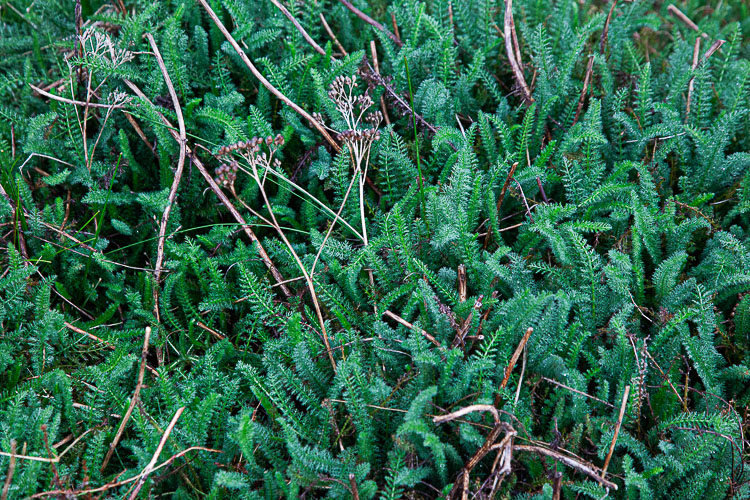
If you have added no compost at all to the garden bed area (neither raw nor mature) you can add some mature compost at planting time by placing compost directly in the hole you have dug. Plants can then be planted directly into compost and topped with soil.

If you live in an area with dry summers and you have soil with good soil structure (drains quickly, water does not pool) you can afford to place your perennial root ball a little below the soil line. This will help to funnel water to the roots during rain events. If you live in a wet area with poorly draining soil, keep the top of the root ball, level with the soil profile or even mound the soil a little if your soil gets too wet too often.

Once the roots are in, fill the hole with more compost or soil and pack down. Not so hard that you squash every bit of air out of the hole you have dug, but packed well enough that the roots have direct contact with soil/compost, for they need to easily access water and nutrients. If not packed down at all, the air pockets and gaps between soil/compost and roots can be too great and the roots will dry out.
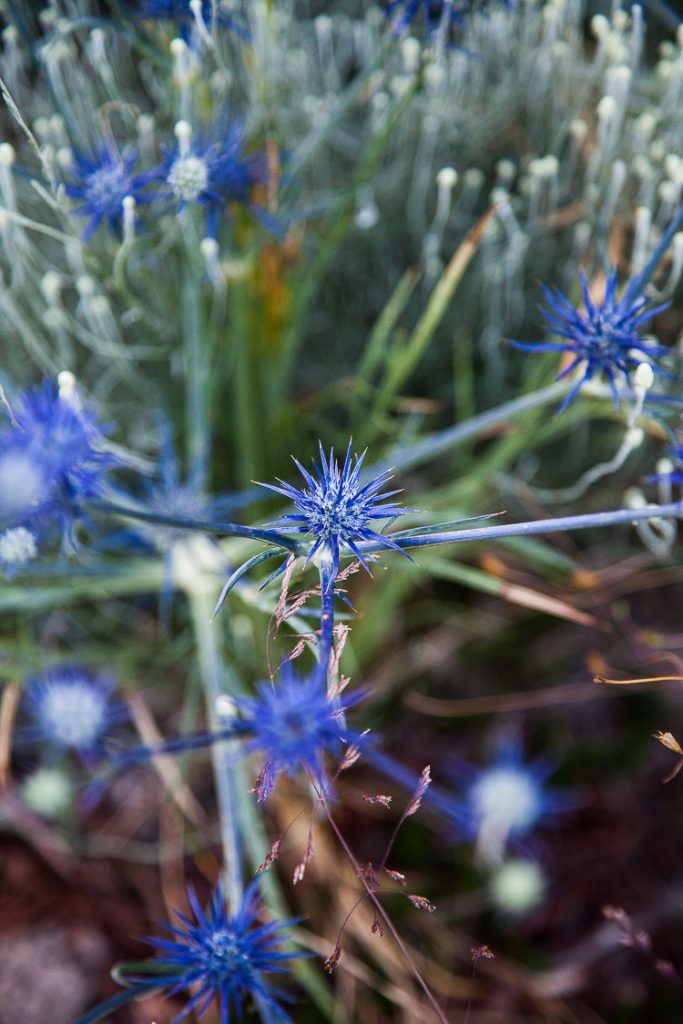
Water in well and place compost (as much as you like) or a small amount of animal manure of any kind (a handful) on top of the soil profile and then mulch heavily but leave a bit of a gap between the mulch and the plant’s central stem. This is important to ensure the stem does not rot. Mulch both in winter and summer to protect roots from frost and or harsh summer sun. Don’t mulch if your area is extremely wet and your soil does not drain well.
Herbaceous perennials for bees, habitat, soil biota, cut flowers, architectural form and the dinner table!
There is a huge variety of herbaceous perennial plants to choose from and they all serve multiple purposes. They provide nectar and pollen for bees, cut flowers and strong architectural forms in your garden: shapes, colour, and texture. As perennials remain in the ground all year they provide habitat for insects of all kinds, they stabilise soil and add organic matter to it by cycling roots and by dropping stems during dormancy.

Plants that remain in the ground perennially, provide a safe haven for worms, spiders, bacteria, algae and fungi: soil builders. It is essential therefore that every garden set aside an area for perennial plants, herbaceous or otherwise.
At the dinner table, the following herbaceous perennials can be served: artichokes, asparagus, fennel, or rhubarb.
Ornamental herbaceous perennials include examples such as the Australian Eryngium ovinum and the European Eryngium ‘Blue Sea Holly’, Echinops “Ritro Blue”, Hylotelephium spectabile ‘Autumn Joy’, Cynara cardunculus (artichokes), Asparagus officinalis(asparagus), to name a few. I have chosen these examples because they are present in my garden.
Here too is a small list of genera that contain a multitude of herbaceous perennials suitable for bees, habitat and beauty in your garden. Genera refers to a grouping of plants that have key similarities. Search for plants in the following genera: Scaevolas, Eryngium, Brachyscome, Echinops, Helichrysum, Calocephalus, Chrysocephalum, Leptorhychos, Pelagonium, Pycnosorus, Vittadinia and Goodenias.
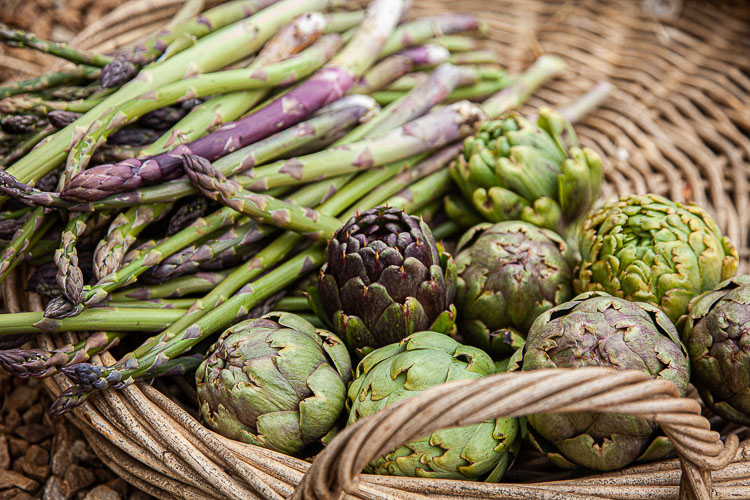
The use of herbaceous perennials in prairie gardens, grasslands and steppes
Prairies, grasslands and steppes, these terms are used to describe areas of land dominated by a mixture of herbaceous perennials and grasses. Prairie is the word typically used to describe land areas in North America, steppes is used to describe areas of Eurasia, and grasslands are found all over the world including here in Australia. Prairies, steeps and grasslands can inform the way we garden and help us to move away from manicured lawns.
Manicured lawns need a great deal of water, and a lot of mowing (and all the associated noise and air pollution of mowing), while prairie, grassland and steppe gardens provide food for bees and a multitude of insects because these garden styles allow plants to flower and to produce seed. They also provide habitat because long weeping grasses provide a great deal more shelter than a finely cut lawn. There will also be periods when these wild beautiful gardens are coated with fairy floss like lacework created by visiting spiders. Absolutely beautiful!
Shrubs, subshrubs and herbaceous perennials
Use a combination of all three to create a low growing vibrantly rich and biodiverse garden. Low growing gardens are particularly useful in areas where sightlines need to be maintained, or where small spaces don’t allow for trees, and in fire-prone areas where trees must be placed well away from the house.
Compost for herbaceous perennials
To ensure a great harvest from edible herbaceous perennials, supply a generous amount of compost or a manure and straw mix to the base of artichokes, rhubarb, asparagus and fennel every winter. Decomposition will occur slowly but surely, ready to supply nutrients to plants in spring and summer.
All other perennials (ornamental) will also benefit from an addition of compost but will not be as dependent on it as the edibles you harvest. With edible plants, your harvest will remove a great deal of vegetative material (to eat). Had this plant material not been harvested it would have died and returned back to the soil.
If in doubt add mature compost. If working with Australian native herbaceous perennials use a compost best suited to native plants. Use chemically formulated liquid fertilisers sparingly, because they do nothing to improve soil structure and can’t be utilised by soil biota. Chemically formulated liquid fertilisers feed plants not soils. Use them to support you but don’t rely on them, the addiction will cause long term soil problems as soil biota are left with little to no organic matter to feast on.
Pruning herbaceous perennials
Most plants really benefit from a hard prune, but the timing is quite flexible with herbaceous perennials. Your first prune can occur the moment the first flush of flowers begins to wilt. You can ‘deadhead’ the flowers. This means cutting off the flower heads only. A new flush of flowers will be produced in their place. You need to do this promptly. If you leave it too long and summer is coming to a close, there won’t be time for a new flush of flowers to burst.
At the end of summer, you can choose to cut the entire plant all the way to the ground because as we have learned herbaceous perennials die back at the end of summer. However, before doing so, make sure that what you are cutting is indeed a herbaceous perennial and not a shrub or subshrub.
If in doubt do not prune until a new flush of leaves forms in spring. Not pruning at the end of summer has a few advantages. Dead, burnt orange, copper coloured or bronze spent flowers look fantastic over winter as their silhouettes create strong shapes in the garden and provide habitat for macro and microfauna. Once spring arrives and new leaves appear you can choose to cut dead stems back and use them as mulch. With some herbaceous perennials, such as tussock and clumping grasses, for example Poa labillardieri, you can get away with pruning every two years. Again use the pruned foliage as mulch to keep cycling organic matter, and to provide protection to soil and food for soil biota.
Observe, take notes and see what you learn.
When I was five years old I fell in love with the idea of ‘the garden’ through a children’s story. Today I am privileged to have a garden of my own and the love I feel for my garden is as deep as the soil I plant in.


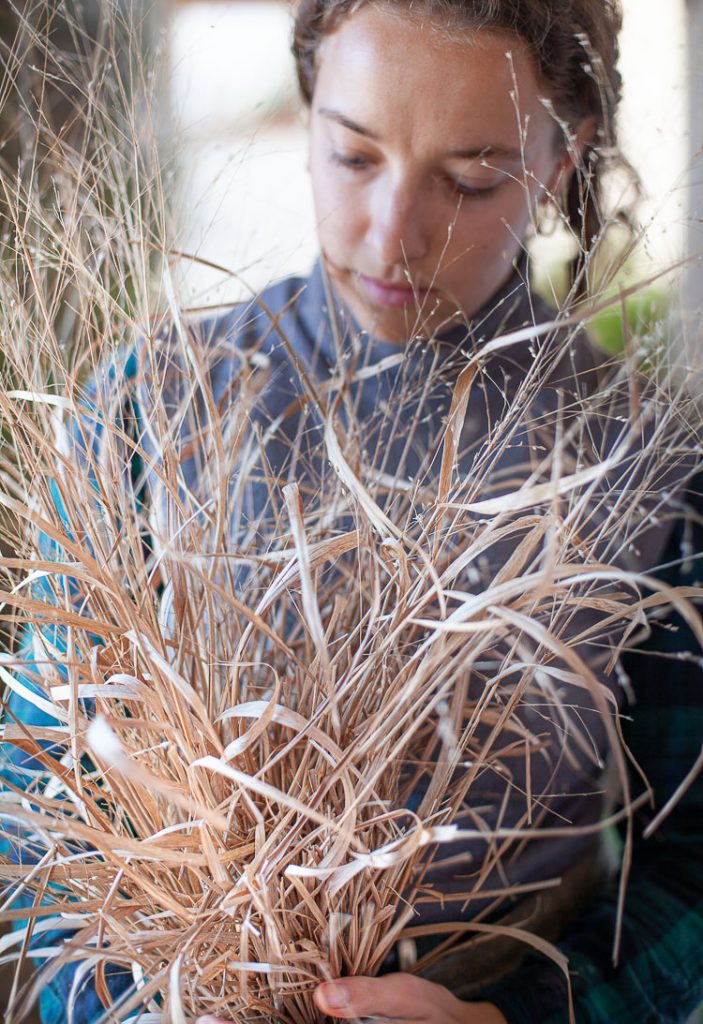
0 Comments